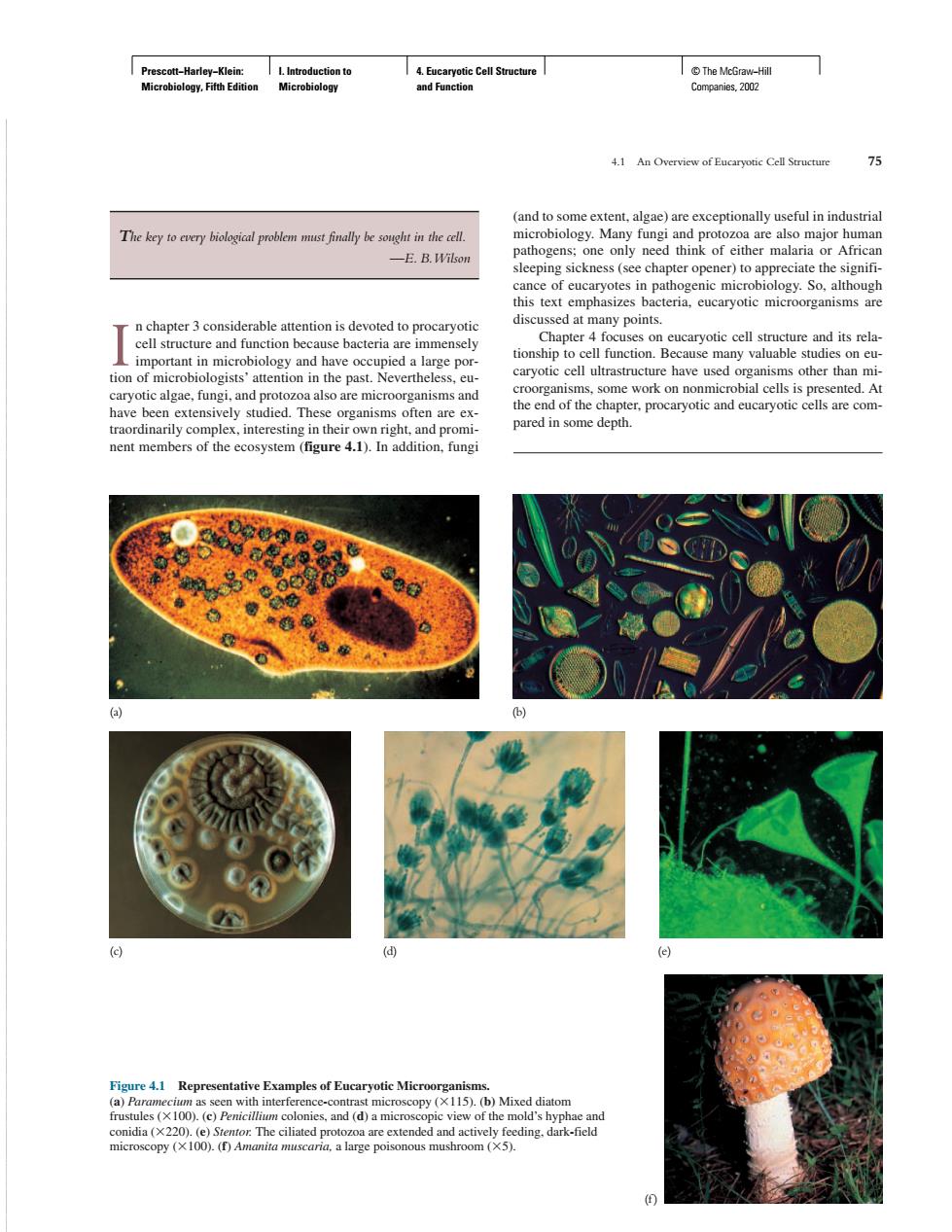正在加载图片...

OG emphasizes Chapter 4 fo any valuable traordinarily complex.interesting in their own right and promi ent members of the ecosystem (figure 4.1).In addition,fung .and (a Prescott−Harley−Klein: Microbiology, Fifth Edition I. Introduction to Microbiology 4. Eucaryotic Cell Structure and Function © The McGraw−Hill Companies, 2002 (and to some extent, algae) are exceptionally useful in industrial microbiology. Many fungi and protozoa are also major human pathogens; one only need think of either malaria or African sleeping sickness (see chapter opener) to appreciate the significance of eucaryotes in pathogenic microbiology. So, although this text emphasizes bacteria, eucaryotic microorganisms are discussed at many points. Chapter 4 focuses on eucaryotic cell structure and its relationship to cell function. Because many valuable studies on eucaryotic cell ultrastructure have used organisms other than microorganisms, some work on nonmicrobial cells is presented. At the end of the chapter, procaryotic and eucaryotic cells are compared in some depth. 4.1 An Overview of Eucaryotic Cell Structure 75 The key to every biological problem must finally be sought in the cell. —E. B.Wilson I n chapter 3 considerable attention is devoted to procaryotic cell structure and function because bacteria are immensely important in microbiology and have occupied a large portion of microbiologists’ attention in the past. Nevertheless, eucaryotic algae, fungi, and protozoa also are microorganisms and have been extensively studied. These organisms often are extraordinarily complex, interesting in their own right, and prominent members of the ecosystem (figure 4.1). In addition, fungi Figure 4.1 Representative Examples of Eucaryotic Microorganisms. (a) Paramecium as seen with interference-contrast microscopy (115). (b) Mixed diatom frustules (100). (c) Penicillium colonies, and (d) a microscopic view of the mold’s hyphae and conidia (220). (e) Stentor. The ciliated protozoa are extended and actively feeding, dark-field microscopy (100). (f) Amanita muscaria, a large poisonous mushroom (5). (a) (b) (c) (d) (e) (f )